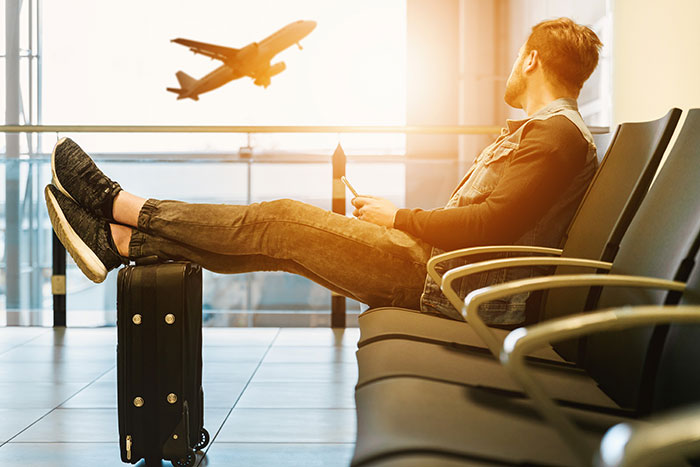Travel has become more accessible than ever before. It seems like every day, a new airliner is breaking a record for the farthest distance traveled from continent to continent. When you’re ready to use some of your valuable vacation time for a big trip, there’s a slew of destinations at your fingertips.


Unfortunately, traveling with a health condition can make the process all the harder. While the Factor V Leiden genetic mutation isn’t as scary as it sounds, the long-haul flights associated with international travel make this condition more threatening.
Factor V Leiden, or FVL for short, is a type of genetic mutation that can result in blood clots, deep vein thrombosis, or even pulmonary embolism if not properly taken care of. Though this mutation sounds out of the norm, it’s estimated that one in every 20 people have the mutation. If you have a family history of FVL or have a close family member with an increased risk factor for the mutation, you might even pass this gene on to your children.
Of course, a health mutation like this means that you might not bleed as much when you get your skin nicked in the barber chair. However, it does become a threat when certain factors are met. Traveling, in particular, can create a perfect environment for pulmonary emboli.
Why does traveling increase the risk of blood clots?
Traveling by air has a few factors that increase the risk of blood clots in humans. This is primarily because of the lack of motion you’re allowed on flights. If you work at a desk job or travel by bus, however, these same symptoms can occur if you fail to move around regularly. According to Healthline, traveling by air for more than four hours at a time can put folks with FVL at an increased risk for these health issues. If you recently experienced a pulmonary embolism or deep vein thrombosis episode, it’s recommended that you wait at least four weeks after your treatment is completed to attempt traveling for long distances.
How to Keep Yourself Safe While Traveling
While we all wish we had a cultural hub in our backyard, most people need to travel great distances to see something different. When push comes to shove, even people who have the FVL mutation will happily sit on an airplane to travel somewhere new.
If you’re one of the many people with FVL who hope to travel, rely on these tips to stay safe:
- Wear loose-fitting, comfortable attire when traveling. This includes comfy pants, shoes that aren’t too tight, and a top that lets you move around a little. Try to store any bulky coats or scarves in the overhead compartment. On long flights, you need to be limber and unconstricted. Wearing loose clothing will allow you to flex your legs and move your ankles, even when you’re seated.
- Get up at least once every two hours. If you can get up more often, all the better. Planes are often cramped, uncomfortable places that make you want to stay in one position. Get your body moving by going to the bathroom or doing some stretches in the aisle. You might feel strange but it’s better than suffering a pulmonary embolism on the plane.
- Take your assigned medication and avoid sedatives that would prevent you from moving around — including alcohol.
Should you still feel the threat of a blood clot coming on, alert a flight attendant and find the nearest health center as soon as you land. (You may also want to call your family medical doctor for good measure.) Many tourist destinations have hospitals near the airport, so finding help is always within reach.
Just because you have FVL doesn’t mean you shouldn’t travel. Follow these tips and explore the world by air without restraint.
